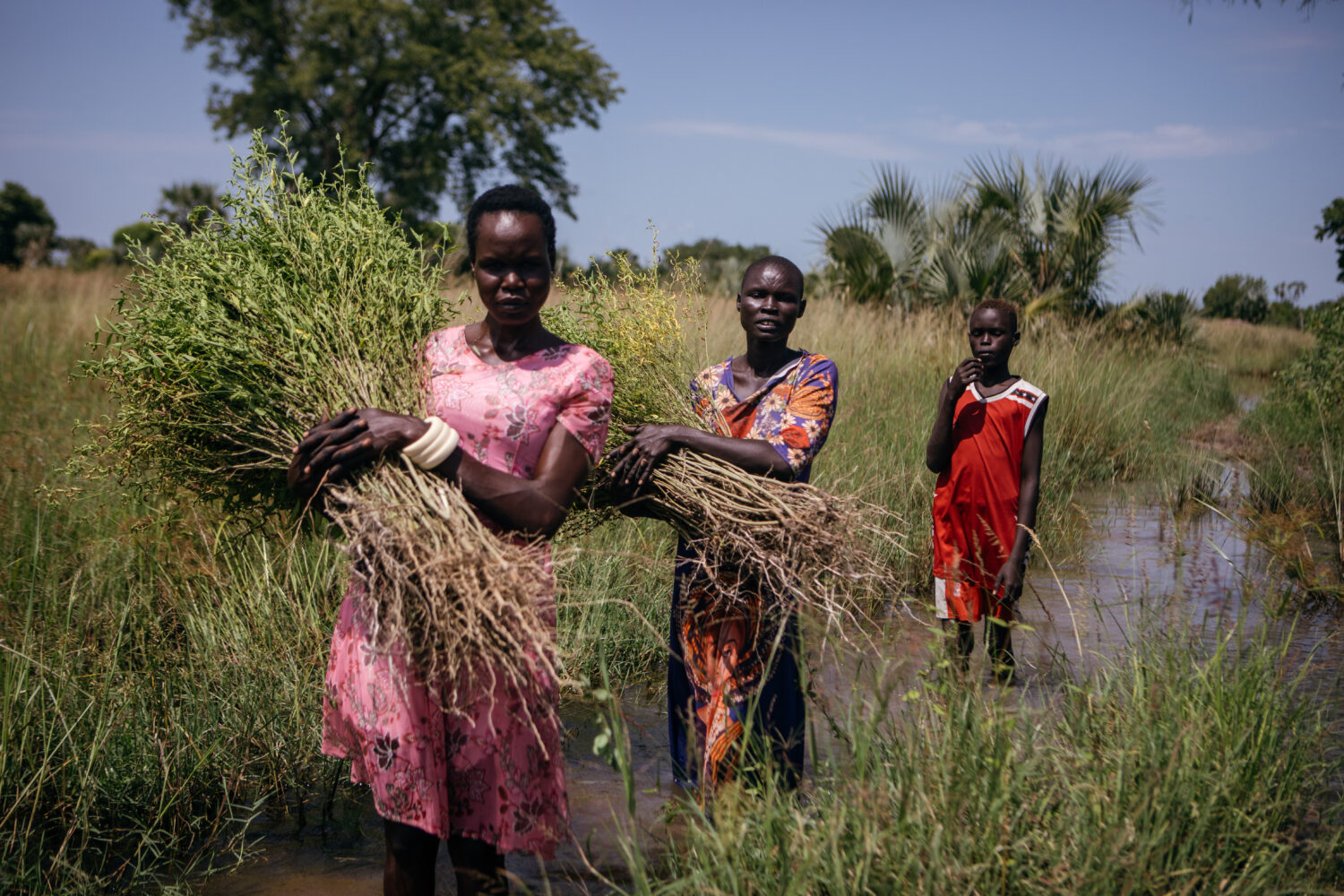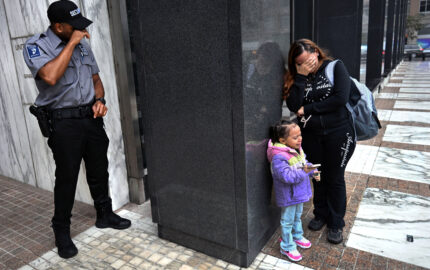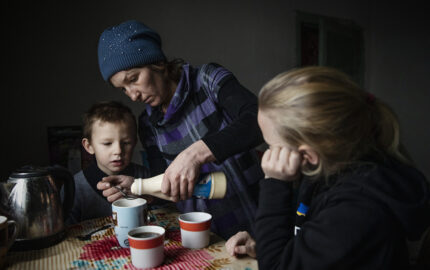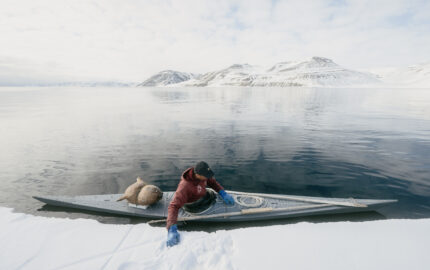As looming threats of a renewed full-scale civil war are ramping up in South Sudan, the country is already grappling with the ongoing fallout from multiple prior crises.
Since August 2024, South Sudan — the world’s youngest nation — has faced its worst floods in 60 years — the continuing impact of which is plunging the country deeper into a worsening human and climate disaster. In addition, fighting raging across the northern border in neighboring Sudan has already driven an estimated 750,000 civilians into South Sudan, where many communities are in dire need of assistance. Already facing extreme food insecurity, with more than 70% of the population needing humanitarian aid, South Sudan has the world’s lowest level of coping capacity for climate disasters, according to the Joint Research Center of the European Commission. Now, the region is being impacted by flooding that is estimated to be affecting half of all the counties in South Sudan.
Located in northeast Africa and one of the world's most impoverished countries, South Sudan is rife with contradictions. It is host to a massive United Nations and international humanitarian presence, but with so many civilians dependent on such aid for everyday survival, the system is not equipped to support them beyond a crisis response.
The country can be difficult to access, with accreditation and media permit costs sometimes exceeding $1,000. I traveled there in September 2024 with Light for the World, a small but global nongovernmental organization based in Austria, that champions disability rights in South Sudan. I was drawn to the group’s dedication to advocating for a demographic largely forgotten by the humanitarian sector, in places that can be extremely difficult to work in. At least 1 in 6 people in South Sudan have a disability, yet are “lost and excluded” from rescue operations, as the Guardian reported; those with disabilities are more likely to die than those without. Globally, 84% of people with disabilities lack a personal preparedness plan for disasters, according to the U.N. Given the country’s recent post-conflict history and insufficient healthcare access, that number is likely even higher in South Sudan.
I was immediately drawn to the idea of reporting in Jonglei state, one of the most flood-prone regions. Alongside Light for the World’s communications team, we planned for a week's worth of reporting in late September, just as the floods were in full force.
Simon Madol, my point of contact at the organization — who I now consider a friend — helped arrange a visit to the village of Malual-Chaat in Kolnyang payam (a sub-county). During our trip, we came across 35-year-old Nyanwut Deng in the pink dress, a mother of four, who had had to seek higher ground after her mud and grass home was flooded in August. She was returning with a neighbor to check on the state of their homes. Their huts remained uninhabitable; it was hard to tell when they would be able to move back. On their way back to where they had been squatting for more than a month — a makeshift shelter consisting of no more than a plastic tarp and some sticks — they collected some long reeds for sweeping.
Light for the World has focused on implementing detailed, tangible strategies for climate-emergency preparation via local hires who are given the opportunity to cultivate strong relationships to the communities they work with.
Organizations like these are stepping into the breach because, in a sentiment I heard over and over from researchers to government officials, South Sudan's government cannot support its civilians. “We're not even talking about actual services, just the means to communicate that the flooding will happen — and the government lacks even that,” says Ferenc Dávid Markó, a visiting professor of anthropology at Eotvos Lorand Science University in Budapest, Hungary, who has had 15 years of field experience in South Sudan.
Light for the World has tried to address some of these gaps by facilitating workshops to prepare people with disabilities, and parents of children with disabilities, for the floods. This includes creating evacuation plans and providing mobility devices (such as wheelchairs and canes), temporary shelters, and psychosocial support.
Although Deng was not someone the organization was directly working with, I was drawn to her because of how stoically she appeared to be handling an awful situation. We had been wading through muddy waters, hip-deep at times, to reach her home and get a sense of the extent of the flooding in the region. My gumboots had filled with water almost immediately; Madol, Deng, and the others made do by taking off their shoes.
Deng and her friend were relaxed and receptive to my questions and my camera, even though South Sudan is a notoriously difficult place to work as a photojournalist. People there generally have an aversion to being photographed, Madol explained, because of lingering trauma from a civil war that has never quite ended, and because of the perceived aggressiveness of a camera being raised in front of one’s face. I took a few frames of Deng standing in her flooded yard and collecting reeds before we parted ways. I haven’t been able to keep in touch with her, and wonder whether she and her family remain displaced from the flooding which was predicted to last through December.
As an independent photojournalist with a background in ecology and the arts, I’ve been based in Nairobi, Kenya, for nearly five years. My work focuses on non-breaking news — interesting stories flying under the radar. After a few years dedicated to Kenyan stories, I felt ready to branch out across the region. Working as a freelancer has given me the freedom to follow my gut when it comes to pursuing certain stories.
I feel grateful that my work affords me the opportunity to chronicle the struggles and triumphs of those facing such extreme challenges, in places around the world that most people will never visit. But I have yet to resolve how it is that some people survive with so little, and others live with an abundance that feels nauseating. My attempt to reconcile such disparities compels me to keep seeking to understand, to look for opportunities to expand where I work, and to remain curious about what lies beyond new borders.



